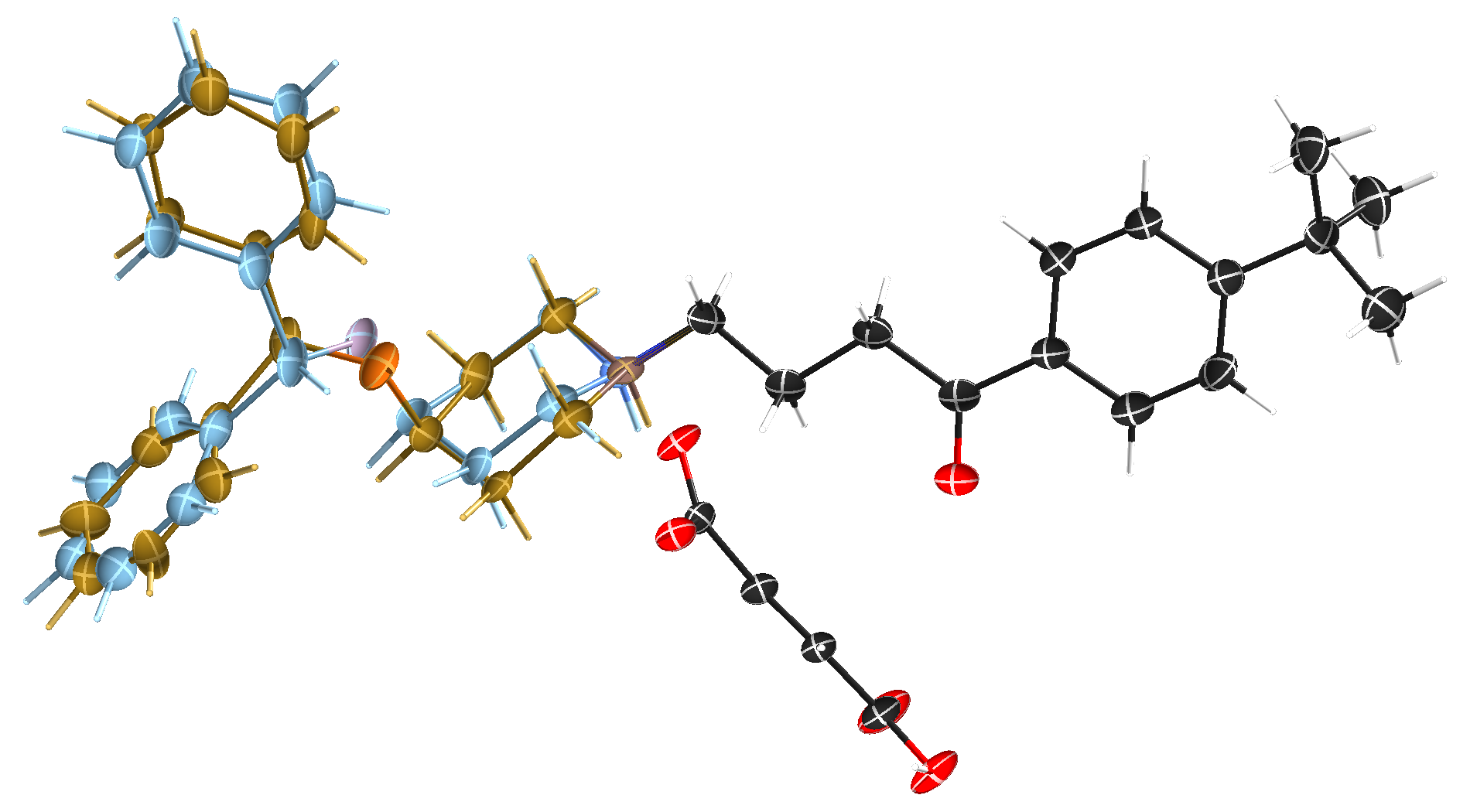2/4: Diagnosis of σ(Fo2) problems
To find the effect of the SHELXL HKLF parameter ‘sm ’ on the suggested WGHT parameters, we'll look at an example structure. Any decent quality crystal structure is suitable for this exercise. Here we’ll use ebastinium fumarate (Priyanka et al., 2022), Fig. 1.

Fig. 1. An ellipsoid plot of ebastinium hydrogen fumarate.
There is nothing special about this structure, but it did have a few problems that needed to be dealt with prior to investigating its weighting scheme. All available crystals were twinned by pseudo-merohedry, though careful surgery with a razor blade reduced the minor component to a tiny but not insignificant sliver. It also has extensive disorder. These are problems that would have to be largely dealt with before mucking about with the weighting scheme in any case, as inadequacies in the model do affect the suggested WGHT parameters in SHELXL. The *.hkl and *.res files are available here. The final refinement of the structure had WGHT parameters optimized as follows:
Ok, nothing unusual there. The space group is P 21/c but the data had been collected as if it were P 21/a, so must be transformed on input using r11…r33 on the HKLF line. We’ll run a refinement with sm = 0.5 to see how the suggested a and b parameters are affected, i.e., using
Which results in:
The a parameter is smaller, but b increases by about 75%. What if we try sm = 1.5 ?
The resulting suggested WGHT becomes:
Now a is a bit larger but the b is driven down to zero. Thus, increasing the σ(Fo2) values increases a slightly but can reduce b dramatically. The upshot is that, in the absence of model deficiencies or other problems, large b parameters in WGHT are caused by underestimated σ(Fo2). It also means that the default values in SADABS are not always adequate. One might argue that simply using sm > 1 on the HKLF line to increase all σ(Fo2) by the same factor is ok. For a reason why that is (probably) not acceptable, see the last paragraph of Part 3. Either way, facilities within SADABS for generating σ(Fo2) are more flexible than and preferable to a simple multiplier like sm. Thus, we’ll turn to SADABS and run it from a command line. Before we do that, let's review some of the options available in SADABS in Part 3.